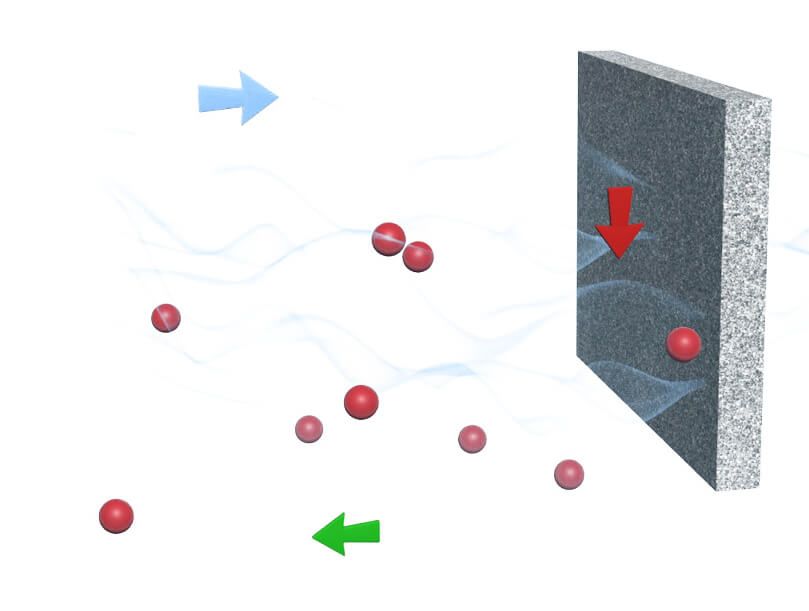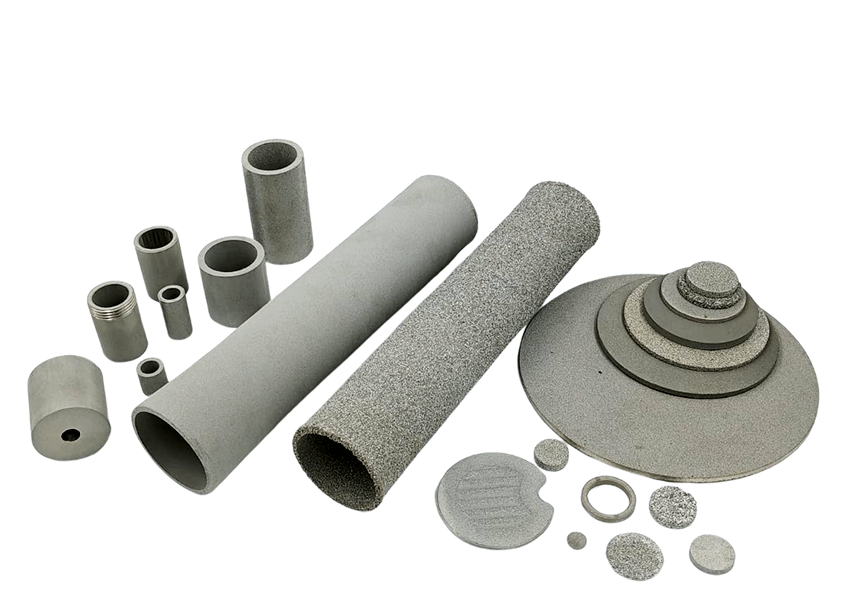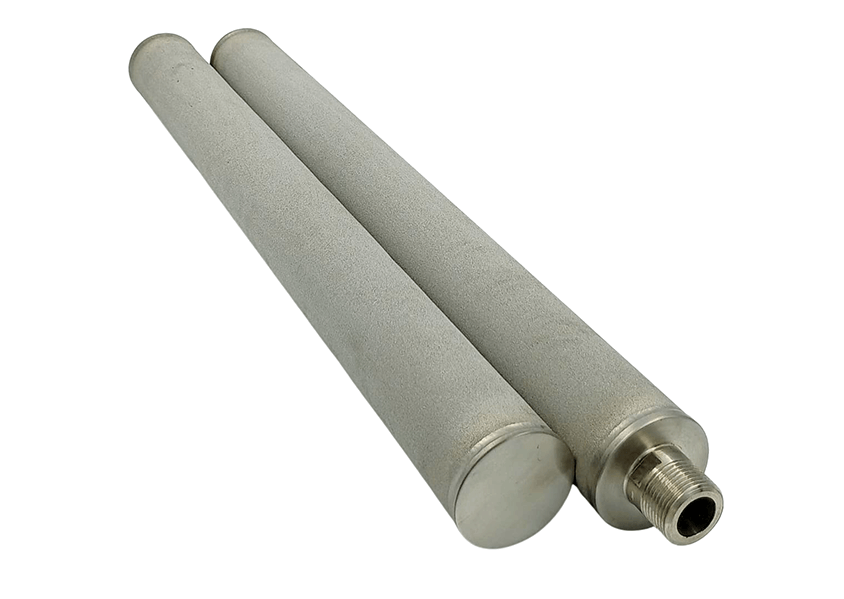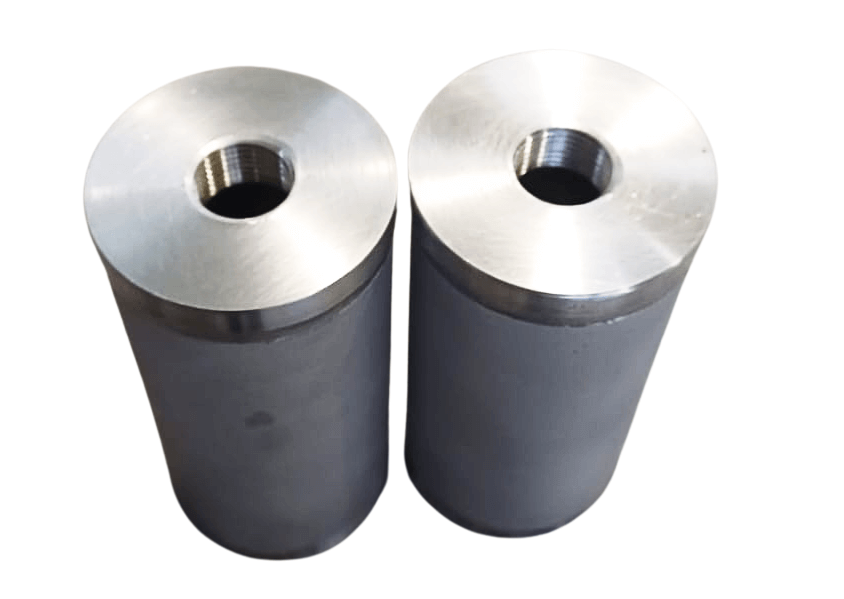Separation & Recovery

The porous element allows the passage of fluid, but retains the passage of suspended solids, such as catalysts that need to be separated or recovered. The principle is the same as filtration. The animation shows how a sintered metallic filter acts. Retained particles, larger than the filter opening, are recovered and can be reused.
The porous element allows the passage of fluid, gas or liquid, retaining the passage of solids (catalysts) or even other fluids (oil). Backwash operations, with inversion in the direction of the fluid, allow cleaning the filter or recovering what is retained.
-

Porous components for recovery through filtration
In the photo we can see different geometries of porous components, such as tubes, discs and cups that can be used to recover particulate material through filtration, as in the case of recovering catalysts. -

Finished cartridge, with flanges and connections
Porous tubes, with appropriate flanges and connections, are used in filtration devices for particulate recovery. They are generally mounted in housings and may contain backwash systems. -

Porous plugs
Filtration equipment for recovering particulate product, as is the case with some catalysts, requires porous components like the one in the photo. The pore opening must be compatible with the size of the particles to be recovered.

























